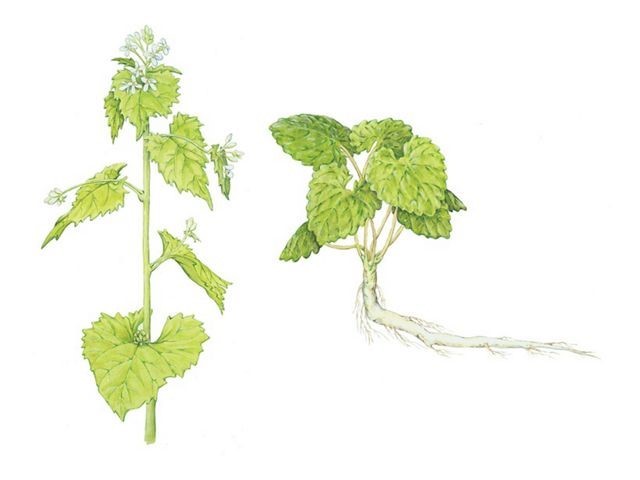Now is a great time of year to check your property for Garlic Mustard. Garlic Mustard (Alliaria petiolatais) is an invasive species originally from Europe and Asia and typically establishes in the understory of forests and in fields. Garlic Mustard can spread quickly in the wind and can soon start to outcompete native species by emerging earlier, blocking sunlight, and using the limited moisture and nutrients in the ecosystem. Garlic Mustard also releases chemicals into the soil via its roots that alters the important underground network of fungi that connect nutrients between native plants.
During its first year, garlic mustard leaves are rounder and take on a rosette formation at ground level. In their second year, the leaves grow up a flowering stem and become more triangular and heart-shaped with toothed edges. Small white four-petaled flowers emerge in the spring. Hand pulling is an easy way to control small populations of Garlic Mustard and is best done in the spring before they go to seed. These plants can then be placed in a plastic bag and thrown out with the garbage and should not be composted.
Any effort to remove Garlic Mustard from your property might seem daunting, but over time, you will hopefully see native plants start to repopulate the areas you have removed Garlic Mustard.
Learn more about Garlic Mustard here:
